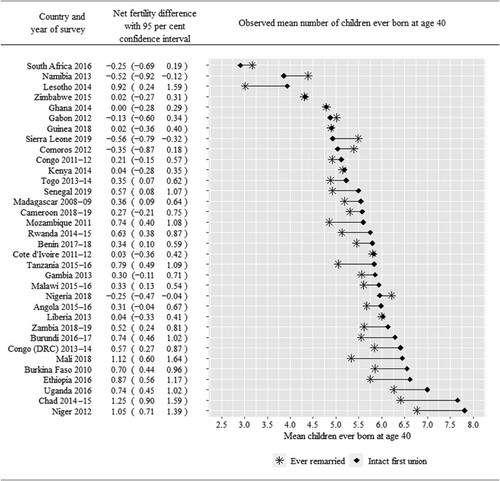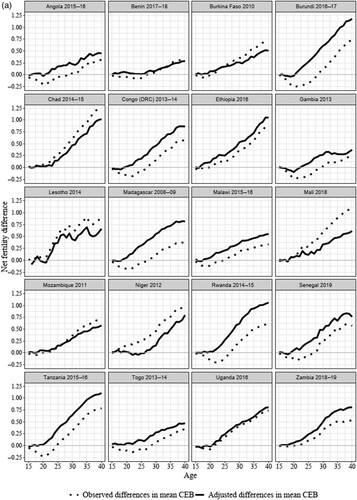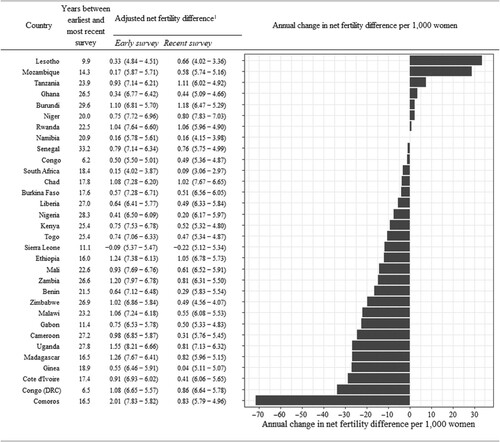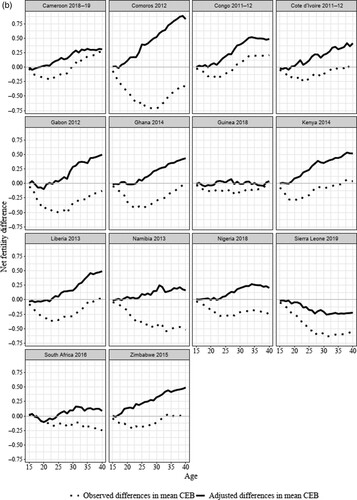Figures & data
Table 1 Percentage of ever-remarried women among ever-married women aged 40–49 in 34 sub-Saharan African countries
Figure 1 Observed mean number of children ever born by age 40 among women aged 40–49, by remarriage status, in 34 sub-Saharan African countries.
Note: Net fertility differences (mean CEB for women in intact first unions minus mean CEB for ever-remarried women) are presented with 95 per cent confidence intervals. A negative difference indicates that cumulative fertility is higher among remarried women.
Source: Most recent DHS data available for each country.

Figure 2 Observed and adjusted net fertility differences among women aged 40–49, by remarriage status and age, in 34 sub-Saharan African countries: (a) countries where observed net fertility difference falls above zero at most ages; and (b) remaining countries.
Note: Net fertility difference = mean CEB for women in intact first unions minus mean CEB for ever-remarried women. A negative net fertility difference indicates that cumulative fertility is higher among remarried women at that age.
Source: As for .

Table 2 Differentials in adjusted fertility increments (mean CEB) between women in intact first unions and ever-remarried women aged 40–49, over three broad reproductive age ranges, in 34 sub-Saharan African countries
Figure 3 Adjusted net fertility differences at age 40 among women aged 40–49, based on mean children ever born and on mean surviving children, in 34 sub-Saharan African countries
1Fertility of ever-married women excludes fertility of women who married once but experienced a union dissolution.
Notes: Net fertility difference = mean CEB or surviving children for women in intact first unions minus mean CEB or surviving children for ever-remarried women. A negative net fertility difference indicates that cumulative fertility is higher among remarried women.
Source: As for .

Figure 4 Change in net fertility difference at age 40 between the earliest and most recent DHS surveys, women aged 40–49, in 32 sub-Saharan African countries.
1Net fertility difference = mean CEB for women in intact first unions minus mean CEB for ever-remarried women, as shown by the calculation in parentheses. A negative net fertility difference indicates that cumulative fertility is higher among remarried women.
Source: Earliest and most recent DHS data available for each country, 1986–2019.

Table 3 Association between net fertility difference and mean children ever born (CEB) at age 40 among ever-married womenTable Footnote1 aged 40–49 (country-level fixed-effects models) in 32 sub-Saharan African countries

